 |
|||
Bruno Di Sano Der Künstler Bruno Di Sano wurde als Salvatore Di Sano am 14. Oktober 1951 in Saint-Nicolas (Nahe Liège), Belgien geboren. Seine berufliche Karriere startete er als Automechaniker und leitete - nach seiner Ausbildung - eine eigene Werkstatt. Sein Debut als Comiczeichner hatte Di Sano 1971 mit der Geschichte "Waterloo", die bei Aredit erschien. Weitere Arbeiten folgten für diverse Fanzines, für Renault Contact, sowie für das Magazin Spirou. Für Autor Hachel zeichnete Di Sano 1979 die Comicstrip-Serie "Puppy" und mit Michel Deligne entstand 1981 das Album "L´ile de cassiopée" das bei Editions Michel Deligne erschien. Um 1981 warf er seinen Job als Mechaniker hin und wurde "Vollzeit-Zeichner". 1982/1984 schaffte Di Sano den Sprung in das berühmte Magazin Tintin. Dort kreierte er die Geschichte "Arnold le rèveur" mit Autorenkollege Jean Dufaux, sowie "Le Jeune Renaudin", ebenfalls mit Dufaux und später mit Mythic. Um 1988 war er beteiligt an der Serie "Platon, Torloche et Coquinette" von Renaud und Didgé und zeichnete über 400 Comicstrips für die Serie Cubitus von Dupa. 1992 erschien dann der erste "Innocence" Band; Di Sanos Einstieg in die erotischen "Funny"-Comic. Die erotischen humoristischen Kurzgeschichten aus "Innocence" sind im Grunde gezeichnete "Herren-Witze", ausgebreitet auf einer einzelnen Comicseite. Dabei sind die gezeigten Bilder eigentlich recht "unschuldig", sprich "Softcore". Obwohl durchaus "deftige" Handlungen erzählt werden, bleibt es bei Andeutungen und "eindeutige" Szenen werden immer schelmisch verdeckt oder durch geschickte Perspektiven entschärft. Di Sano´s Reihe glänzt mit wunderschönen idealisierten Frauen, die "meist" unverhüllt durch die einzelnen Bilder huschen. 1997 folgte, ebenfalls bei P&T Production, die erotische Reihe "Alys & Vicky". Die Geschichten hierfür schrieb Autor Mythic, den Di Sano noch aus der gemeinsamen Tintin Zeit kannte. Während er für die über 20 Bände starke Album-Reihe Blagues coquines einige Beiträge zeichnete, half er zudem seinem langjährigen Kollegen François Walthéry mit dessen Serie "Johanna". Die Serie um Johanna, die Di Sano ab Band 2 übernommen hat, handelt von einem Mann, bzw. dessen Gehirn, das in einen weiblichen Superkörper transferiert wurde. Durch seine Freundschaft mit François Walthéry kam Bruno Di Sano auch mit dessen erfolgreicher Serie Natacha in Berührung und durfte für Band 20 einige Szenen und Schauplätze gestalten. Ebenfalls mit François Walthéry als Autoren, arbeitet Bruno Di Sano an der Abenteuer-Serie "Rubine". Erotische Veröffentlichungen/Erotic Publications Weitere Veröffentlichungen/Further Publications |
This translation is unedited!
Bruno Di Sano
Bruno Di Sano was born as Salvatore Di Sano on 14 October 1951 in Saint-Nicolas (Nahe Liège), Belgium. He started his professional career as a car mechanic and, after completing his training, managed his own workshop.
Di Sano made his debut as a comic-strip artist in 1971 with the story "Waterloo", published by Aredit. Further work followed for various fanzines, for Renault Contact and for the magazine Spirou. In 1979 Di Sano drew the comic strip series "Puppy" for author Hachel and in 1981 the album "L´ile de cassiopée", which was released by Editions Michel Deligne, was created together with Michel Deligne. Around 1981, he quit his job as a mechanic and became a full-time artist.
In 1982/1984 Di Sano made the leap into the famous magazine Tintin. There he created the story "Arnold le rèveur" with fellow author Jean Dufaux, as well as "Le Jeune Renaudin", also with Dufaux and later with Mythic. Around 1988 he was involved in the series "Plato, Torloche et Coquinette" by Renaud and Didgé and drew more than 400 comic strips for the series Cubitus by Dupa.
In 1992 the first "Innocence" band appeared; Di Sanos entered the erotic "Funny"comic. Similar to colleague Dany, Di Sano draws in a "typical" Franco-Belgian funny style. However, unlike Dany's style, his stroke is simpler and clearer - and does without a rather scribbled, sketchy touch.
The erotic, humorous short stories from "Innocence" are basically drawn "Men's Jokes", spread out on a single comic strip page. The pictures shown here are actually quite "innocent", mean "softcore". Although "solid" actions are told, all hints and "unambiguous" scenes are always mischievously concealed or defused by skillful perspectives.
Di Sano's series shines with beautiful idealized women, who scurry through the individual pictures "usually uncovered". His style of drawing is quite comparable to that of François Walthéry. The more than 300 single pages are distributed on the albums: "En toute Innocence", "Innocence sur mesure", "Innocence sans bornes", "Projection d' Innocence", "Aux Innocents les mains pleines", "Délits d' Innocence" and "Innocence cœur à cœur". The series was published in Holland under the serial title Rooie Oortje, or in German in the "Rote Ohren"-series.
In 1997, P&T Production followed the erotic series "Alys & Vicky". The stories were written by the author Mythic, whom Di Sano knew from the time of Tintin together. While he drew some contributions for the more than 20 volumes of the album series Blagues coquines, he also helped his long-time colleague François Walthéry with his series "Johanna".
The series about Johanna, which Di Sano has taken over from vol. 2, deals with a man or his brain, which has been transferred into a female superbody. According to a new interview, Di Sano does not see much potential to continue the series. The rights are held by Walthéry anyway, and he could continue the series in the future with another artist. In 2001, "Dans la peau d´une femme" (not to be confused with volume 2 with the same title) was published in France, a anthology that unites volume 1 and 2 of the series. In German, the series was released by BSE under the title "Ich, die Sexbombe".
Through his friendship with François Walthéry, Bruno Di Sano also came into contact with his successful series Natacha and was allowed to create some scenes and settings for volume 20.
Bruno Di Sano is also working on the adventure series "Rubies", with author François Walthéry. |
|||||||
 |
||||||||
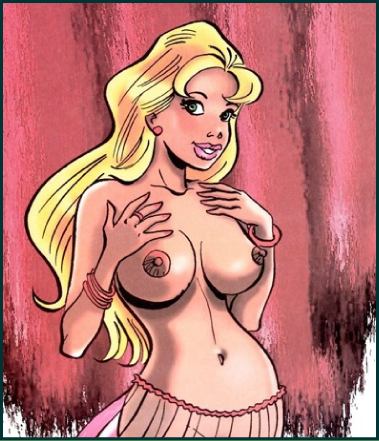 |
||||
 |
||||
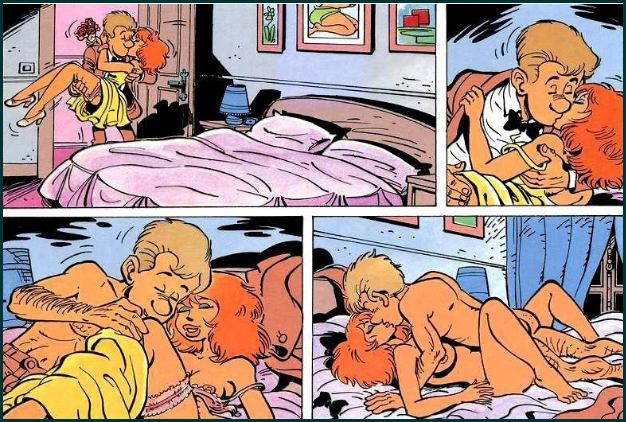 |
||
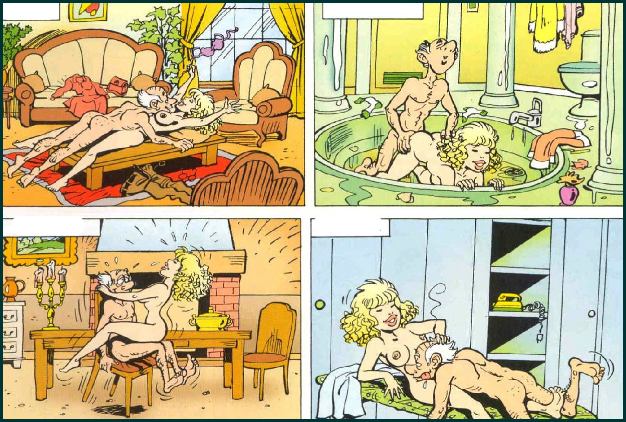 |
||
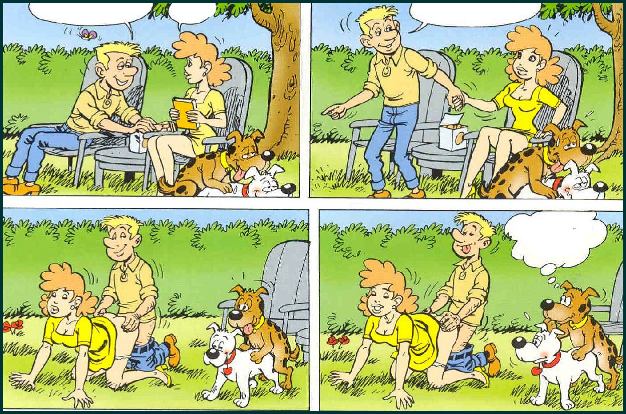 |
||
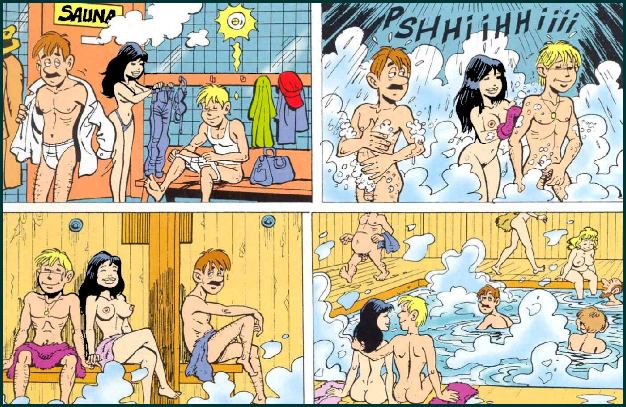 |
||
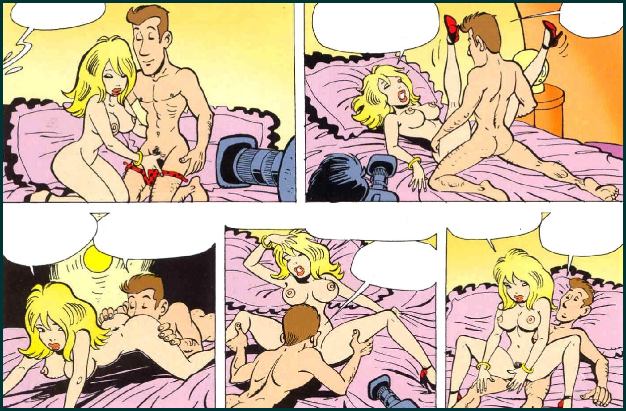 |
||
 |
||
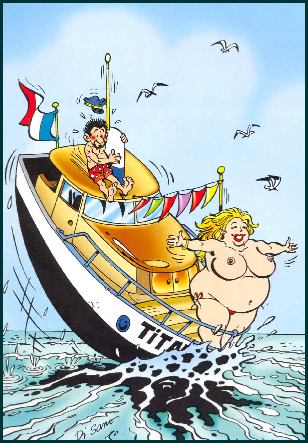 |
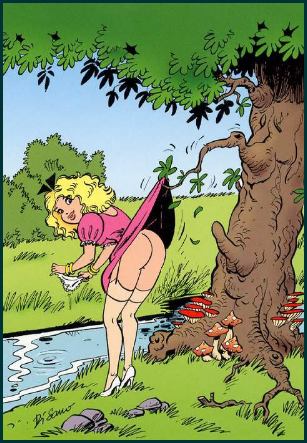 |
|||